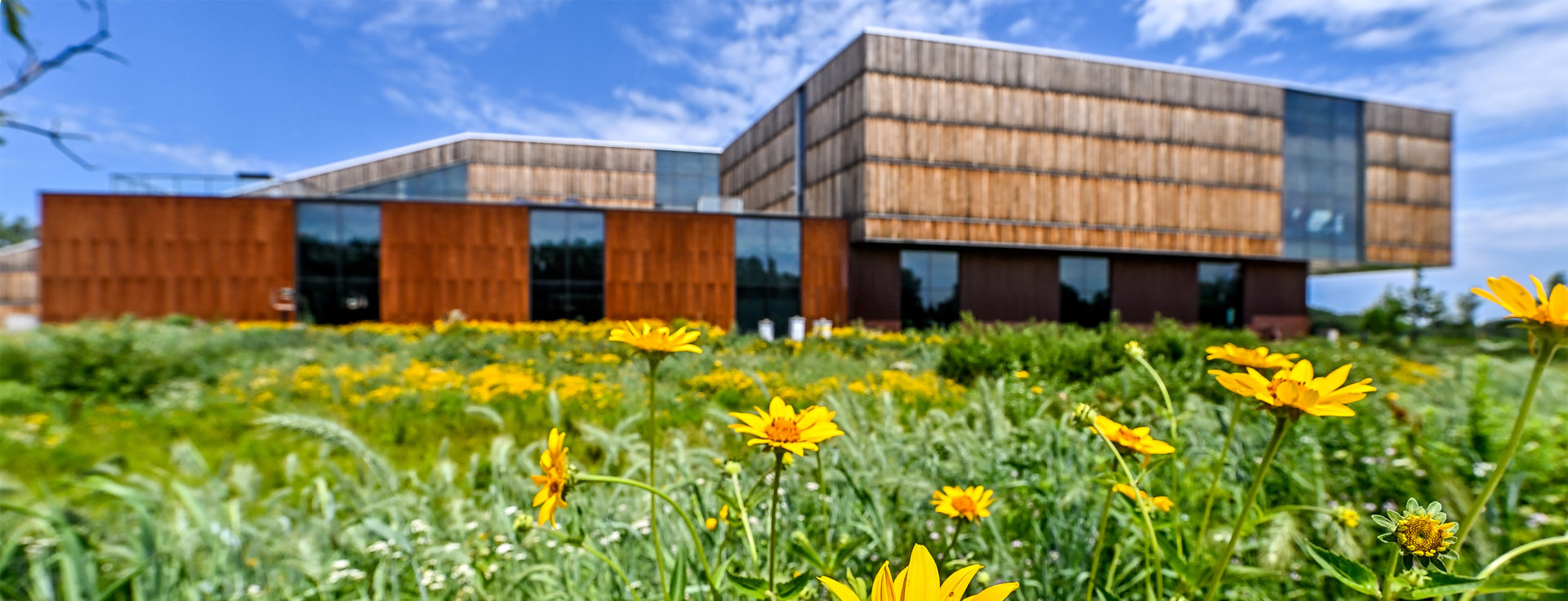
Learning Landscape
Welcome to our living "classroom"
From native plantings to a green roof, the science lessons continue outside of the new Bell Museum. This living outdoor “classroom” provides even more opportunities to learn about Minnesota’s biodiversity. Check out the links below to learn about recent additions and interactive activities!
You are always welcome to visit the our Learning Landscape during daylight hours. You can also revisit past Learning Landscape activities here.
-
Interactive fun for the whole family!
#BellOutside Activities
This summer, join us for BUGS outside the Bell!
-
Geocaching on the Learning Landscape
Bell Art Find
When’s the last time you went on a treasure hunt? We challenge you to try geocaching to find a prize!
-
What do you notice?
Build Your Own Insect
Use your observation skills! Build your own insect using our printable diagram.
-
Explore the Learning Landscape
Insect Adventure Activity
Explore the world of insects right on the Bell’s Learning Landscape. How many six-legged friends can you find? Happy adventuring!
There is so much to explore on our Learning Landscape! Some of the outdoor features include:

Landscaping for pollinators
Enjoy pollinator gardens and native wildflowers, grasses, shrubs and trees while learning about the importance of pollinators in nature and society.

Geology exploration area
Large boulders representing Minnesota’s major rock types (basalt, limestone, sandstone, gneiss, etc.) encourage visitors to get to know the state’s geologic history.

Bird feeding stations
Observe birds at our bird feeding stations, generously donated by our friends at the Minnesota Ornithologists’ Union—how many different species can you spot? Do you see any of these same birds in your neighborhood?

Green roof and observation deck
Experience sustainable design when you visit our green roof. Check out our event listings to find opportunities to use a high-powered telescope to explore the universe.
Weather stations
You may notice two weather stations on our landscape. One can be seen in the pond, monitoring the weather and disturbance at the surface of the pond, supporting aquatic ecology research conducted by the Finlay Lab. The other is solar-powered and located near the south sidewalk, and monitors weather components including: windspeed, temperature, humidity, UV, solar radiation, and more! The Finlay Lab is using data from both stations to study the variation of weather around ponds.

Pond
Rainwater collected from the museum’s roof—supplemented with well water—supports a community of plants, insects, amphibians, and other aquatic life.

Solar station
A sundial surrounded by a circle of engraved paving lets visitors observe the time of day, the time of year, and the four cardinal directions.

Honey bee home
As a leader in pollinator education, the Bell Museum has kept honey bee colonies for over 20 years. Our hard working honey bees can be seen nestled in the pollinator gardens and are also visible from our Education Wing.


